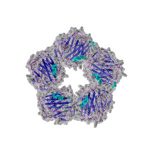Saliva contains numerous protein-degrading enzymes, and levels of these enzymes are elevated in individuals with periodontal disease. (Watanabe et al., 1981; Ingman et al., 1993; Uitto et al., 1990) It is thought that many of these enzymes originate from inflammatory cells or microbes present in the mouth, but proteases and peptidases have also been identified in pure glandular secretions. (Kennedy et al., 1998) Some of these enzymes of glandular origin are believed to be involved in the processing of inactive peptide precursors to active forms and in the degradation of active peptides in order to regulate neuropeptide actions. (Albo et al., 2002; Konttinen et al., 1996)
The details of the effects of these protein-degrading enzymes on quantitative measurement of salivary analytes such as CgA, VIP, and NPY have not been well studied. Salimetrics therefore urges researchers to adopt the most conservative approach to saliva collection and processing in order to protect these analytes from possible degradation:
- Collect samples by the passive drool technique into pre-chilled tubes and keep cold.
- Freeze the samples as soon as possible after collection.
- Avoid multiple freeze-thaw cycles, since the effects of freezing and thawing are uncertain for these analytes. It may be advisable to aliquot saliva samples into smaller volumes for storage.
- Do not use enzyme inhibitors during collection of samples, since they may lead to EIA interference.
- Sample collection should be carried out at standardized times, due to the possibility that analytes may have diurnal rhythms.
- Use of absorptive collection devices (swabs) should be avoided until their use is thoroughly assessed for the analyte(s).
- The effects of variation in saliva flow rate should be considered, since ANS activity often affects saliva flow and protein secretion together. We therefore recommend that data on saliva flow (mL/min) should be collected while samples are gathered. The flow rate may then be used to express the assay results (µg/mL) as a secretion rate (µg/min). Both methods of expressing results should be compared in the analysis of the data.
- Location in the mouth where samples are collected should be standardized. Consistency of collection location has been shown to be significant for some salivary proteins (e.g., alpha-amylase, SIgA), and mouth location may also be significant for other protein and peptide markers. We generally advise that behavioral and developmental studies should collect unstimulated whole saliva in order to minimize problems that may originate due to differences in the composition of saliva from the various salivary glands or as a result of changes that may occur with stimulation.
- Document the physical activity level of study participants and the presence of oral disease.
- Document consumption of alcohol, caffeine, nicotine, and prescription and over-the-counter medications.
 Contact: Salimetrics (USA)
Contact: Salimetrics (USA)
